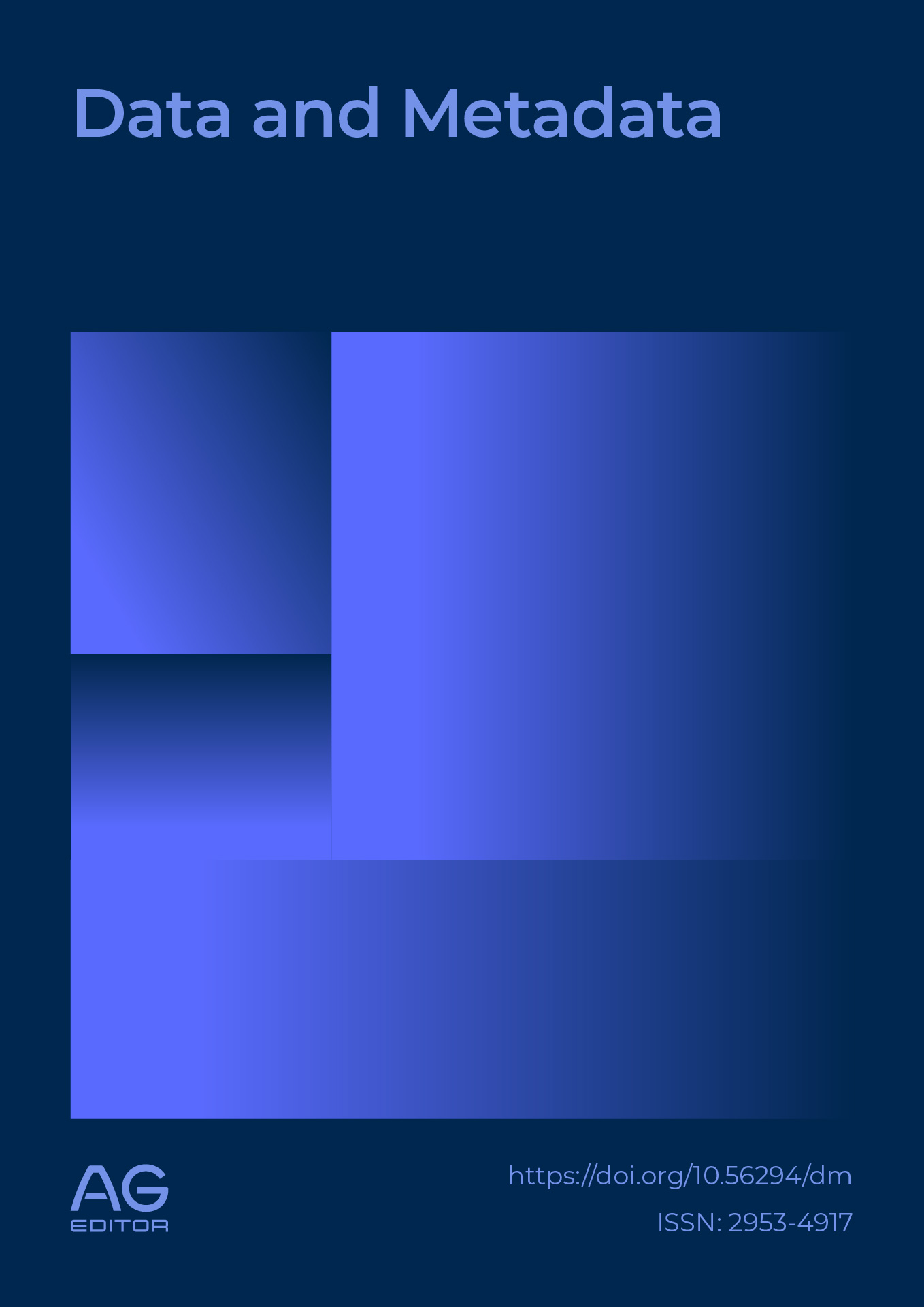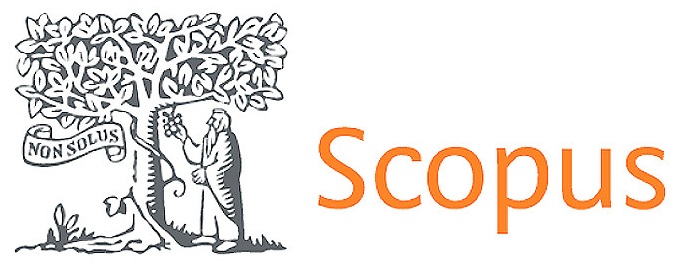Prediction of ICT Usage in Ecuador Through Machine Learning: impact of Education Level, Age, and Income on Digital Inclusion
DOI:
https://doi.org/10.56294/dm20251006Keywords:
ICT, ECUADOR, MACHINE LEARNING, DIGITAL DIVIDE, PROJECTIONSAbstract
The progress of digital technologies in Ecuador during 2023–2024 was analyzed using data from the ENEMDU and machine learning models, processing 56 941 records that were carefully cleaned, normalized, and organized. Most notably, there was an increase in ICT usage across all age groups: usage among young people aged 18–29 rose by 1,7 %, among adults aged 30–49 by 1 %, and among those over 50 by 1,2 %. Education level emerged as the most decisive factor, showing a strong correlation of 0,69, although improvements were observed across all income levels. However, the gap between urban and rural areas remains significant, highlighting the need for more inclusive policies. The results suggest that this growth is expected to continue through 2025 and begin to stabilize between 2026 and 2027.
References
1. Kuzior A, Kochmańska A, Marszałek-Kotzur I. Information and communication technologies as a tool of modern communication in organizations and society. En: Proceedings of the 37th International Business Information Management Association Conference (IBIMA). 2021. p. 30–1.
2. UNESCO. Informe de seguimiento de la educación en el mundo, 2023: tecnología en la educación: una herramienta en los términos de quién? Paris: UNESCO; 2024.
3. Perrin A. Mobile technology and home broadband 2021. Pew Research Center. 2021;559.
4. Raihan MMH, Subroto S, Chowdhury N, Koch K, Ruttan E, Turin TC. Dimensions and barriers for digital (in)equity and digital divide: a systematic integrative review. Digital Transformation and Society. 2024;
5. Ma X. Internet use and income gaps between rural and urban residents in China. J Asia Pac Econ [Internet]. 2024 [citado 27 de diciembre de 2024];29(2):789–809. Disponible en: https://www.tandfonline.com/doi/abs/10.1080/13547860.2022.2054133
6. INEC. Tecnologías de la Información y Comunicación-TIC [Internet]. 2024 [citado 27 de diciembre de 2024]. Disponible en: https://www.ecuadorencifras.gob.ec/tecnologias-de-la-informacion-y-comunicacion-tic/
7. ONU. Digital Economy Report 2024. United Nations Conference on Trade and Development; 2024.
8. Trujillo Valdiviezo G, Rodríguez Alegre L, Mejía Ayala D, López Padilla RDP. Transformación digital en América Latina: una revisión sistemática. Revista Venezolana de Gerencia [Internet]. 23 de septiembre de 2022 [citado 26 de diciembre de 2024];27(100):1519–36. Disponible en: https://produccioncientificaluz.org/index.php/rvg/article/view/38788/43223
9. Tirado-Morueta R, Aguaded-Gómez JI, Hernando-Gómez Á. The socio-demographic divide in Internet usage moderated by digital literacy support. Technol Soc. 2018;55:47–55.
10. Jazdauskaite J, Privarova M, Baranskaite E, Juščius V, Kelemen-Henyel N. Evaluation of the impact of science and technology on the labour market. Marketing i menedžment innovacij. 2021;(4):153–67.
11. Albinowski M, Lewandowski P. The impact of ICT and robots on labour market outcomes of demographic groups in Europe. Labour Econ. 2024;87:102481.
12. Hetmańczyk P. Digitalization and its impact on labour market and education. Selected aspects. Educ Inf Technol (Dordr). 1 de junio de 2024;29(9):11119–34.
13. Herman E. The Influence of ICT Sector on the Romanian Labour Market in the European Context. Procedia Manuf. 1 de enero de 2020;46:344–51.
14. Calderón-Gómez D, Casas-Mas B, Urraco-Solanilla M, Revilla JC. The labour digital divide: Digital dimensions of labour market segmentation. Work Organisation, Labour and Globalisation. 2020;14(2):7–30.
15. Pontones-Rosa C, Pérez-Morote R, Santos-Peñalver JF. ICT-based public policies and depopulation in hollowed-out Spain: A survey analysis on the digital divide and citizen satisfaction. Technol Forecast Soc Change. 1 de agosto de 2021;169.
16. Apolo D, Melo M, Solano J, Aliaga F. Pending issues from digital inclusion in Ecuador: challenges for public policies, programs and projects developed and ICT-mediated teacher training. Digital Education Review [Internet]. 30 de junio de 2020 [citado 27 de diciembre de 2024];37(37):130–53. Disponible en: https://revistes.ub.edu/index.php/der/article/view/30610
17. Al‐shehari T, Alsowail RA. An Insider Data Leakage Detection Using One-Hot Encoding, Synthetic Minority Oversampling and Machine Learning Techniques. Entropy 2021, Vol 23, Page 1258 [Internet]. 27 de septiembre de 2021 [citado 27 de diciembre de 2024];23(10):1258. Disponible en: https://www.mdpi.com/1099-4300/23/10/1258/htm
18. Mahmud Sujon K, Binti Hassan R, Tusnia Towshi Z, Othman MA, Abdus Samad M, Choi K. When to Use Standardization and Normalization: Empirical Evidence From Machine Learning Models and XAI. IEEE Access [Internet]. 2024 [citado 27 de diciembre de 2024];12:135300–14. Disponible en: https://ieeexplore.ieee.org/document/10681438/
19. Kumar S, Chong I. Correlation Analysis to Identify the Effective Data in Machine Learning: Prediction of Depressive Disorder and Emotion States. International Journal of Environmental Research and Public Health 2018, Vol 15, Page 2907 [Internet]. 19 de diciembre de 2018 [citado 27 de diciembre de 2024];15(12):2907. Disponible en: https://www.mdpi.com/1660-4601/15/12/2907/htm
20. Jiayi J, Junyu Y, Tianjiao Z, Qian W. Intelligent evaluation method for design education and comparison research between visualizing heat-maps of class activation and eye-movement. J Eye Mov Res [Internet]. 10 de octubre de 2024 [citado 27 de diciembre de 2024];17(2). Disponible en: https://bop.unibe.ch/JEMR/article/view/10964
21. Somvanshi M, Chavan P, Tambade S, Shinde S V. A review of machine learning techniques using decision tree and support vector machine. Proceedings - 2nd International Conference on Computing, Communication, Control and Automation, ICCUBEA 2016. 21 de febrero de 2017;
22. Rodriguez-Galiano V, Sanchez-Castillo M, Chica-Olmo M, Chica-Rivas M. Machine learning predictive models for mineral prospectivity: An evaluation of neural networks, random forest, regression trees and support vector machines. Ore Geol Rev. 1 de diciembre de 2015;71:804–18.
23. Vinueza SF, Gallardo VP. Impacto de las TIC en la Educación Superior en el Ecuador. Revista Publicando. 30 de junio de 2017;4(11(1)):355–68.
24. Guerrero TSV, Bustamante SEE. Políticas educativas y Tecnologías de la Información y Comunicación (TIC): una mirada al Ecuador. Dilemas contemporáneos: Educación, Política y Valores [Internet]. 1 de mayo de 2020 [citado 27 de diciembre de 2024]; Disponible en: https://dilemascontemporaneoseducacionpoliticayvalores.com/index.php/dilemas/article/view/2329
25. Martínez-Serrano MC. Percepción de la Integración y uso de las Tecnologías de la Información y la Comunicación (TIC). Estudio de Profesores y Estudiantes de Educación Primaria. Información tecnológica [Internet]. 1 de febrero de 2019 [citado 27 de diciembre de 2024];30(1):237–46. Disponible en: http://www.scielo.cl/scielo.php?script=sci_arttext&pid=S0718-07642019000100237&lng=es&nrm=iso&tlng=es
26. Berrett B, Murphy J, Sullivan J. Administrator Insights and Reflections: Technology Integration in Schools. The Qualitative Report [Internet]. 1 de enero de 2012 [citado 27 de diciembre de 2024];17(1):200–21. Disponible en: https://nsuworks.nova.edu/tqr/vol17/iss1/10
27. Matamala C. Desarrollo de alfabetización digital ¿Cuáles son las estrategias de los profesores para enseñar habilidades de información? Perfiles educativos. 2018;40(162):68–85.
28. Nyika GT. Use of ICTS for socio-economic development of marginalised communities in rural areas: Proposals for establishment of sectoral Rural Entrepreneurial Networks [Internet]. Vol. 7, Journal of Development and Communication Studies. 2020 [citado 27 de diciembre de 2024]. Disponible en: http://www.devcomsjournalmw.org
29. Braesemann F, Lehdonvirta V, Kässi O. ICTs and the urban-rural divide: can online labour platforms bridge the gap? Inf Commun Soc [Internet]. 2022 [citado 27 de diciembre de 2024];25(1):34–54. Disponible en: https://www.tandfonline.com/doi/abs/10.1080/1369118X.2020.1761857
30. Gonzalez DA, D’Antonio S, Maceiras A, Diaz Catalan C, Sadaba Rodriguez I. Types of older adults ICT users and the grey divide: attitudes matter. Revista de Cercetare si Interventie Sociala, ISSN-e 1584-5397, Vol 74, 2021, págs 120-137 [Internet]. 2021 [citado 27 de diciembre de 2024];74(74):120–37. Disponible en: https://dialnet.unirioja.es/servlet/articulo?codigo=8053966&info=resumen&idioma=ENG
31. Park JR, Feng Y. Trajectory tracking of changes digital divide prediction factors in the elderly through machine learning. PLoS One [Internet]. 1 de febrero de 2023 [citado 27 de diciembre de 2024];18(2):e0281291. Disponible en: https://journals.plos.org/plosone/article?id=10.1371/journal.pone.0281291
32. Satria D, Handrito RP, Paksi GM, Aurellia PJ. Assessing the Importance of ICT on High-Educated Poverty in East Java Using Random Forest Methods. Statistika [Internet]. 2024 [citado 27 de diciembre de 2024];104(1):27–41. Disponible en: https://csu.gov.cz/assessing-the-importance-of-ict-on-high-educated-poverty-in-east-java-using-random-forest-methods
33. Prabawa WG, Nurmandi A, Misran, Subekti D. Innovation of Government’s Policy for Bridging the Digital Divide: (Case Study in Malaysia and India). Communications in Computer and Information Science. 2023;1835 CCIS:246–53.
34. Shah A. Revolutionizing Connectivity: The BharatNet Scheme and Beyond. Vidhyayana - An International Multidisciplinary Peer-Reviewed E-Journal - ISSN 2454-8596. 3 de marzo de 2024;9.
35. Kattel R, Mergel I. Estonia’s Digital Transformation: Mission Mystique and the Hiding Hand. Great Policy Successes [Internet]. 24 de octubre de 2019 [citado 27 de diciembre de 2024];143–60. Disponible en: https://academic.oup.com/book/42635/chapter/358101931
36. Mettenberger T, Binder J, Zscherneck J. Unveiling the Resources of Digital Pioneers: An Agency Perspective on Digital Social Innovation in Rural Germany. European Countryside. 1 de septiembre de 2024;16(3):412–36.
37. Tirado-Morueta R, Rodríguez-Martín A, Álvarez-Arregui E, Ortíz-Sobrino MÁ, Aguaded-Gómez JI. The digital inclusion of older people in Spain: technological support services for seniors as predictor. Ageing Soc [Internet]. 25 de junio de 2023 [citado 27 de diciembre de 2024];43(6):1409–35. Disponible en: https://www.cambridge.org/core/journals/ageing-and-society/article/digital-inclusion-of-older-people-in-spain-technological-support-services-for-seniors-as-predictor/ADF5EC05F8FB28EC7FE89872E3581BDF
38. Blanco Marigorta AM, Díaz Hernández A, García Moreno C, Mellín Yanez Zambrano P, Melián Martel N. ELIMU. Supplying water and electricity to a primary school in Kenia using solar energy: Joint social project between the University of Las Palma de Gran Canaria and the University of Nairobi. Vicerrector de Internacionalización M y PI, editor. 1st Congress Bridge to Africa: Las Palmas de Gran Canaria. 2024;59–67.
39. Reyes O, Valdés-Rodríguez O. Logros y desafíos del Plan Ceibal. Revista Educarnos. 2021;
Published
Issue
Section
License
Copyright (c) 2025 Patricio Moreno-Vallejo, Patricio Moreno-Costales, Gisel Bastidas-Guacho, María Vallejo-Sanaguano (Author)

This work is licensed under a Creative Commons Attribution 4.0 International License.
The article is distributed under the Creative Commons Attribution 4.0 License. Unless otherwise stated, associated published material is distributed under the same licence.



